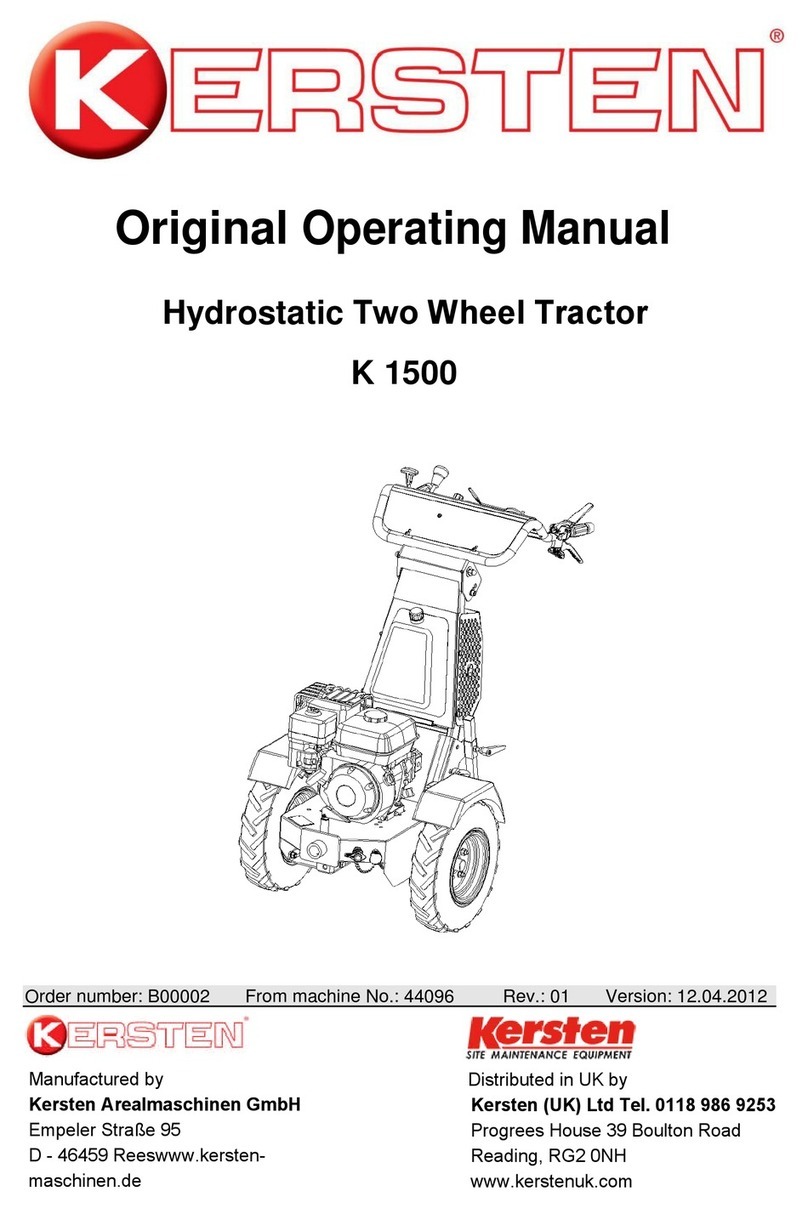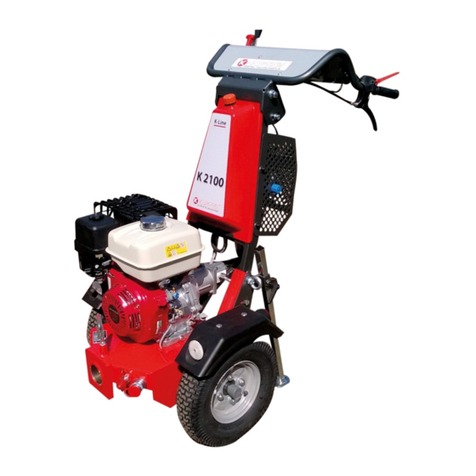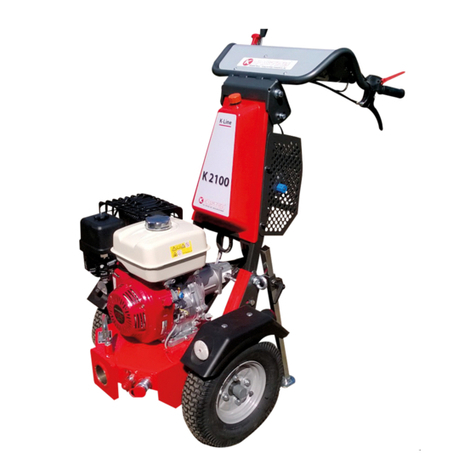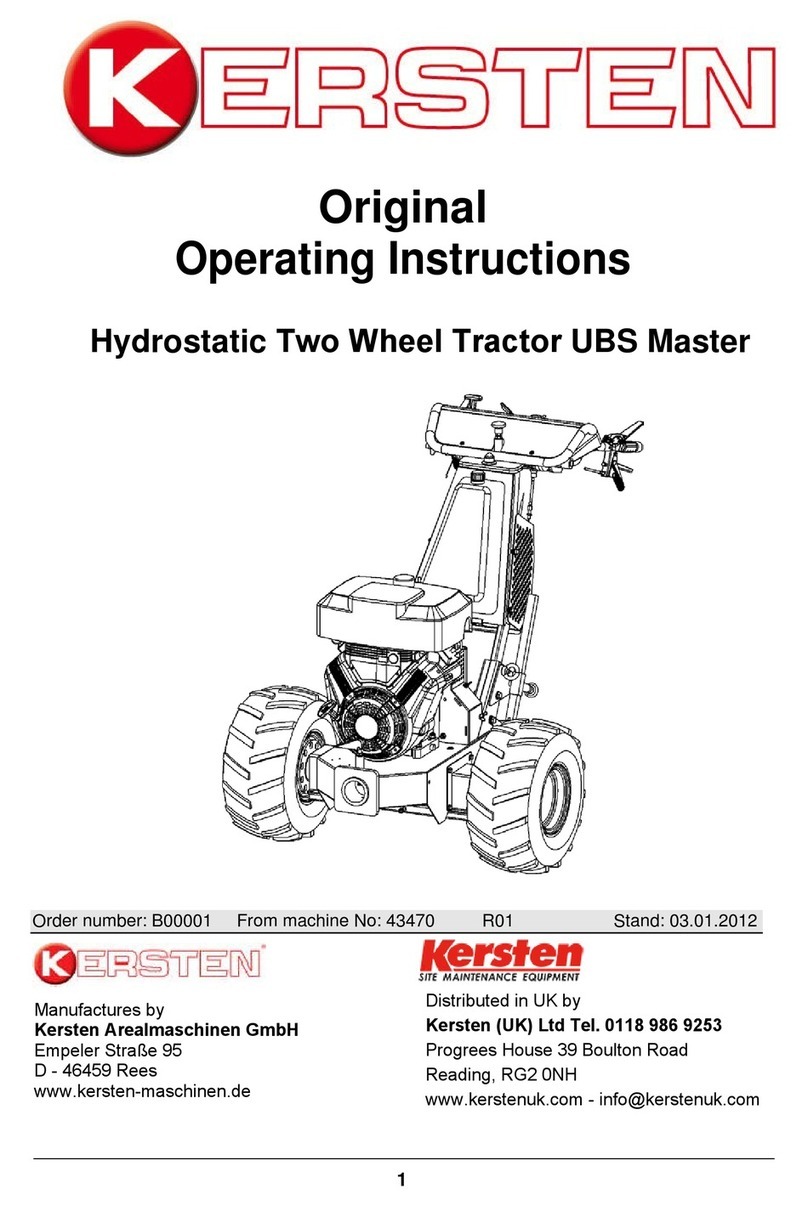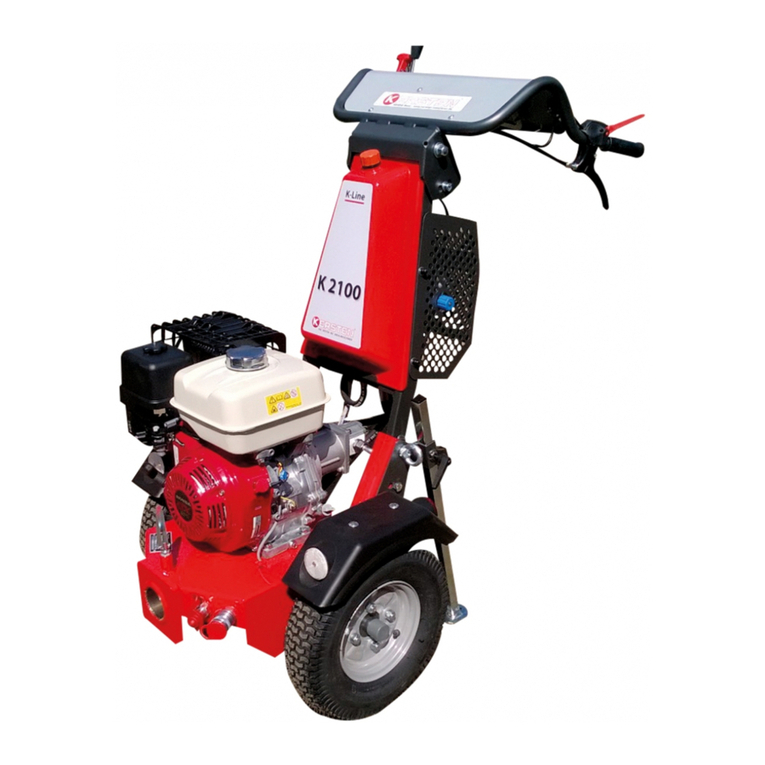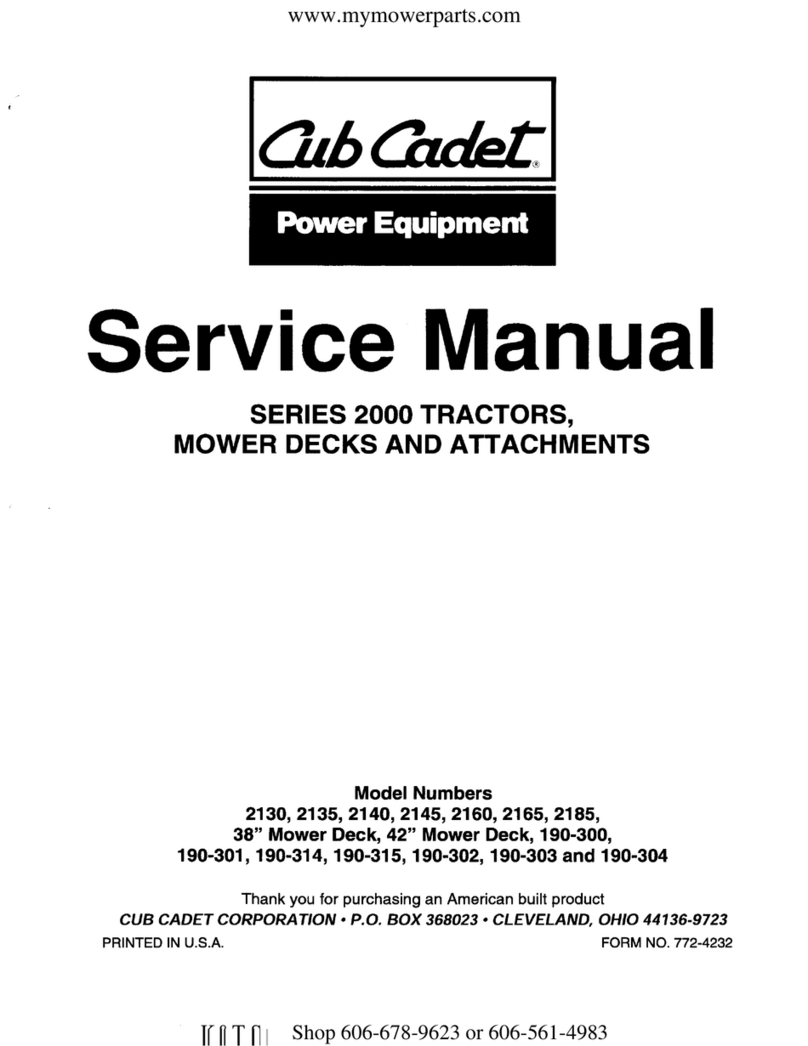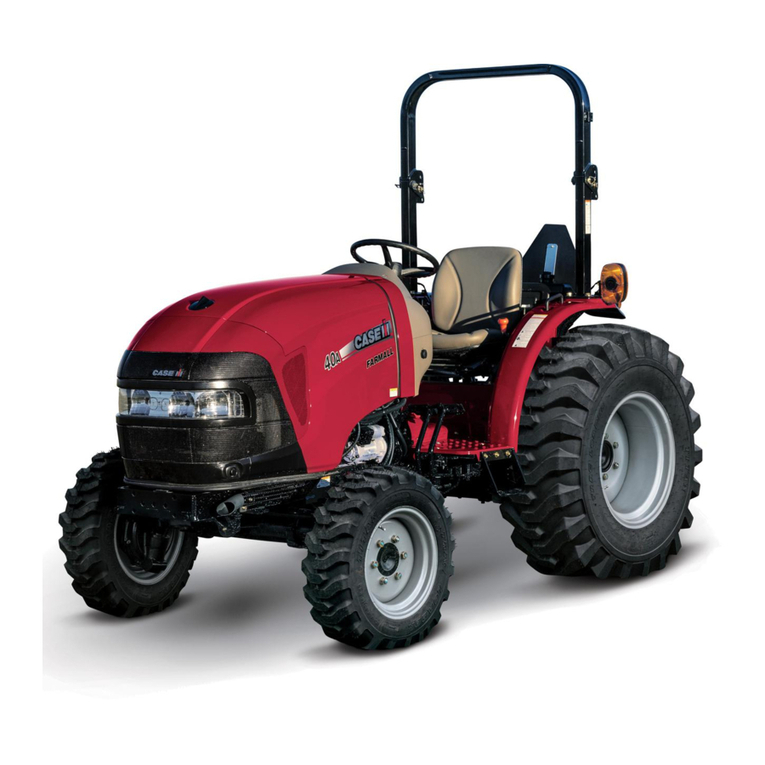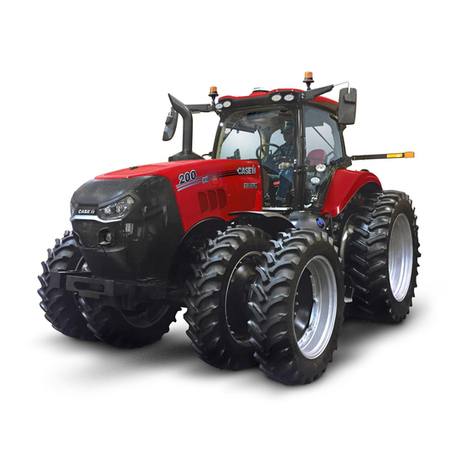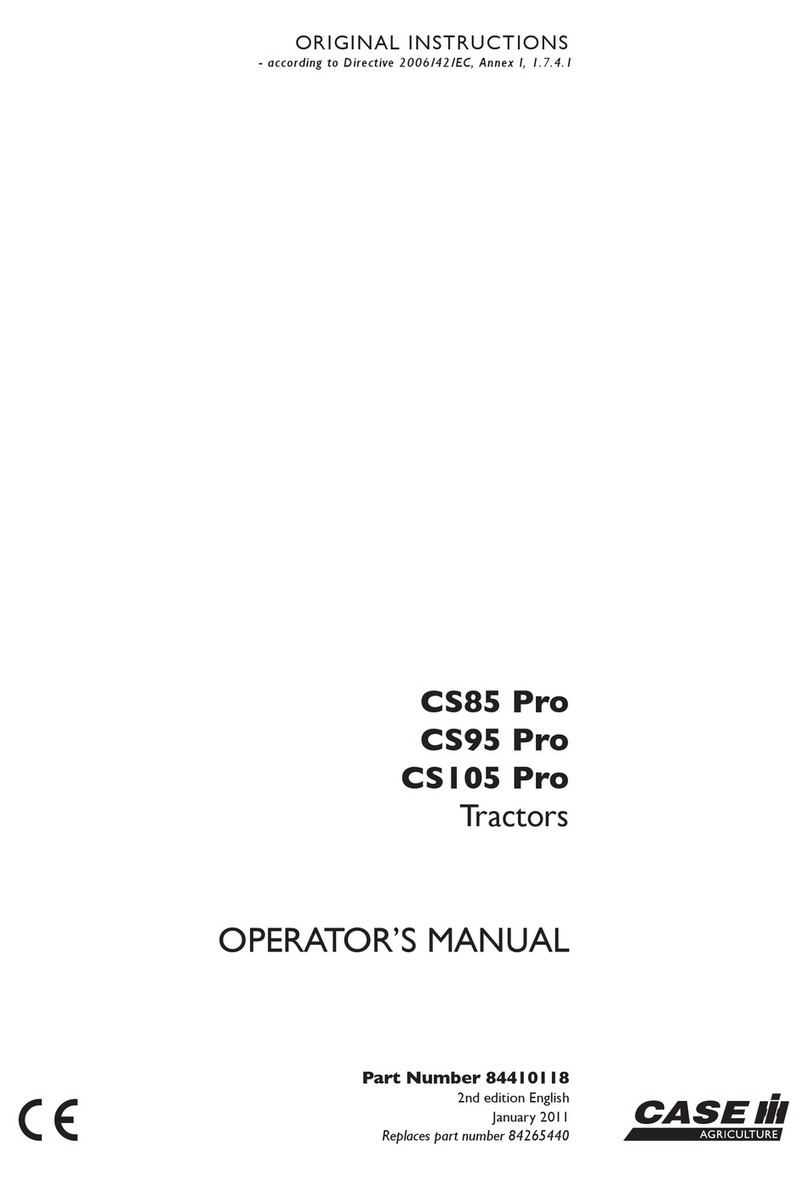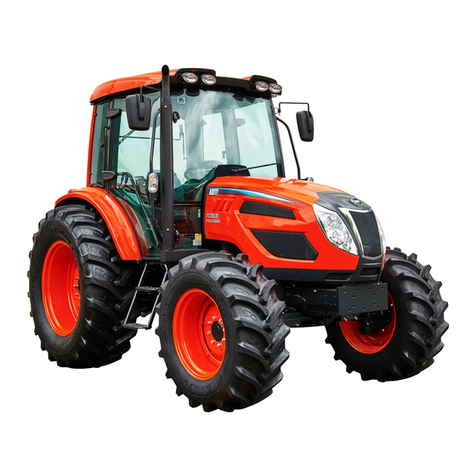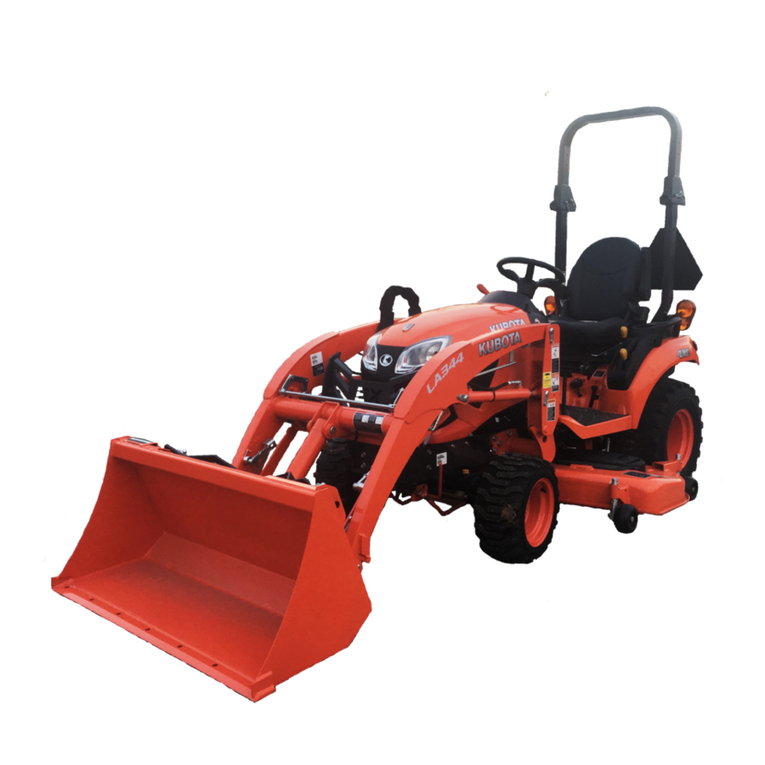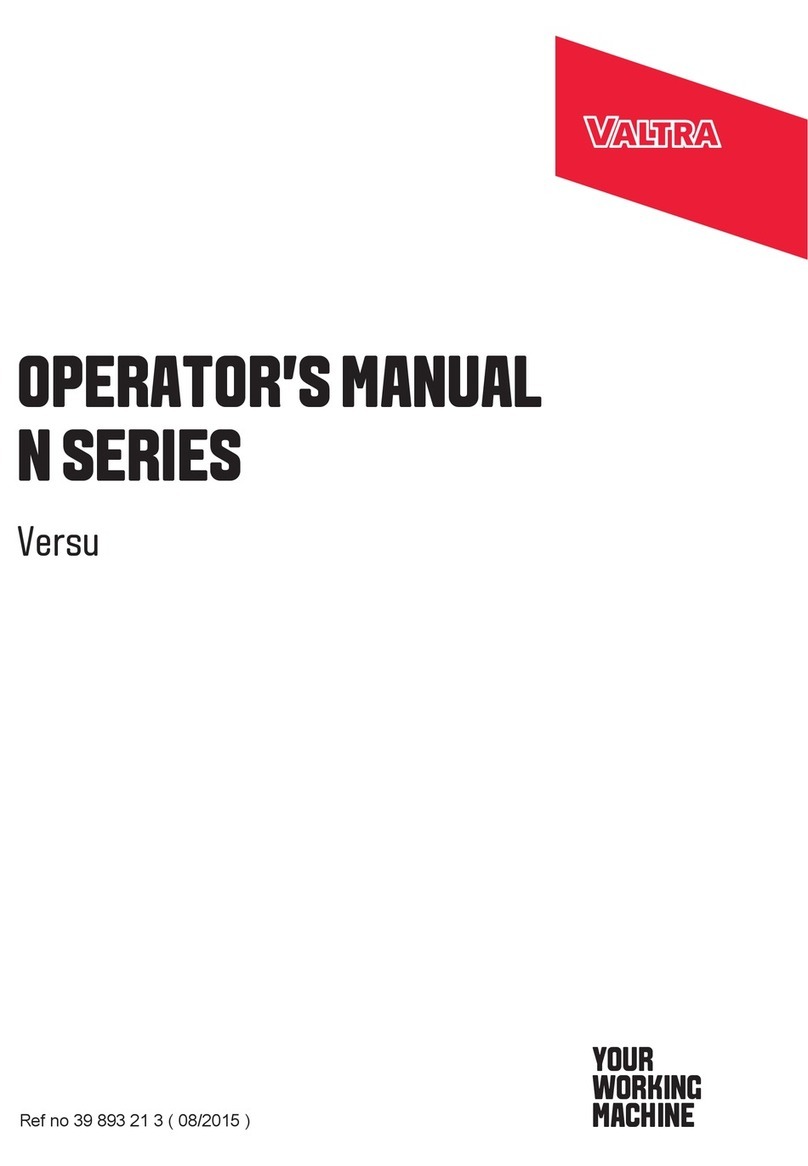Kersten K1500 Technical reference manual

Instruction and Parts Manual
___________________________________________________ _
K1500
2 Wheel Hydraulic Tractor
Part no 6000 000 002 Copyright Kersten (UK) Ltd © 2010 Compiled 12/4/10
UK
Kersten Maschinenvertriebs GmbH
D - 46459 Rees, Empeler Straße 93-95
www.kersten-maschinen.de
Tel.: 028 51 / 92 34 0
Fax: 028 51 / 92 34 44
Kersten (UK) Ltd
Progress House, 39 Boulton Road
Reading, Berkshire RG2 0NH
Phone: 0118 986 9253
Email: info@cnect2.com

Contents 3
1.0 Forward 4
2.0 About this manual 5
2.1 Before operating 5
2.2 Notes on using this manual 6
3.0 Heath and safety 7
3.1 Intended use 7
3.2 General health and safety and accident prevention advice 7
3.2.1 General principles 7
3.2.2 Safe working area and hazard area 8
3.2.3 Prior to commencing work 8
3.2.4 Starting the machine 9
3.2.5 Whilst operating the machine 9
3.2.6 Leaving the machine unattended 9
3.2.7 Wheels and tyres 10
3.2.8 Attaching and detaching implements and accessories 10
3.2.9 Cleaning, maintenance and repair work 11
3.2.10 Engine, fuel and oil 11
3.2.11 Electrical system and equipment 12
3.3 Safety Decals 13
4.0 Disposal 15
5.0 Warranty 15
6.0 Recommendations 16
6.1 Lubricants 16
6.2 Fuels 16
6.3 Maintenance and repair 16
2.1 Product identification 5
Contents

3
1.0 Forward
Dear Sir, Madam,
Thank you for purchasing a quality product the company Kersten.
This product is designed and produced using the most modern manufacturing
techniques and extensive quality assurance measures.
It is only when you are satisfied with your product that our goal is achieved.
Before the first use of this machine or attachment, please read this manual
fully and conscientiously. Please ensure all operators of this machine and any
attachments also read this information.
Keep this document handy for future reference. By referring to this manual
you can then operate this machine safely and effectively.
We wish you every success with your Kersten Machine.
Georg Kersten
Geschäftsführung
Forward

4
2.0 About this manual
2.1 Product Identification
Always quote model number and serial number when ordering spare parts.
The identification plate may be found on the main chassis of all machines.
2.2 Before operating
Before you start the engine or attempt to attach or operate any machine,
we ask that you urgently to make yourself familiar with the manual and the
operation of the machine.
If you are in any doubt over any operation or require further details, you
should contact the supplier, importer or manufacturer of this product.
It is mandatory that all users of this product are familiar with this manual
and the product.
You should first make yourself familiar with the machine at a slow speed
and on a flat, even surface.
●This symbol indicates important safety information!
●Read all safety references on the following pages!
●Read the operating instructions before attaching or
start-up!
●Use this manual in conjunction with the power unit manual
if applicable!
●Pass all safety instructions onto other users!
About this manual

5
2.3 Notes on using this manual
All points to be considered are indicated as follows:
●Text
●Text
●Text
Procedural instructions are indicated as follows:
1. Text
2. Text
3. Text
The machines described in this manual are subject continual to technical
proress. All information/pictures and technical data in this manual correspond
to the latest specifications at the time of publication. The manufacturers
reserve the right to make alterations at any time.
About this manual

6
3.0 Health and safety
It is important to note that not all possibilities can be covered within this
manual. The manual assumes that the operator has a general awareness for
Health and Safety to have been appointed an operator in the first place.
This machine has been designed, so far as is reasonably practical, so that it
will not endanger the safety of the operator or anyone else if the machine is
used and maintained according to the instructions stated in this manual which
have been compiled following research and experience of the manufacturers.
In order to minimise the risk of accidents please consider the following
information.
3.1 Intended use
●The machine is exclusively intended for professional employment in the
management of land, forestry, amenity and landscape conservation and
for sole use with designated attachments. (Also see individual attachment
instructions.)
●Use going beyond that described is not considered as intended. Therefore
the manufacturer is not responsible for any resulting damage or harm and
the operator alone is responsible for the risk.
●Compliance with and adherence to the operating, maintenance and repair
as prescribed by the manufacturer in this manual must be considered
essential elements of intended use.
●The machine may only be operated, repaired and serviced by persons
familiar with the machine, this manual and all relevant safety features and
dangers.
●The relevant rules for the prevention of accidents as well as other safety
relevant rules according to the health and safety at work act must be
considered as part of the operating procedure.
●The manufacturer is not liable for any accidents or damage resulting from
modifications or alterations carried out on the machine without the
express written permission of the manufacturer.
3.2 General health and safety and accident prevention advice
3.2.1 General Principles
●Follow general operating instructions and all additional health and
safety regulations!
●This machine should not be operated by any person under the age of
16, not even under adult supervision. Minors must not be allowed to
play with the machine.
This machine may be subject to regulations when used on the public
highway.
Health and Safety

7
●Before starting operating this machine you should be familiar with all
controls and their functions. Familiarization should not be carried out
during operation. It is too late!
●Beware of rotating parts—keep safe distance.
●Beware of trailing machines and machines with inertia. Ensure they
stop completely before making any adjustments.
●Standing in the danger area of the machine is forbidden!
●Operators are advised to wear suitable clothing that is close fitting
with stout footwear– safety boots. Loose fitted clothes or casual
footwear increase risk of accident.
●Do not leave the engine running in an enclosed area.
●Keep machine clean to reduce the risk of fire
●Be aware that the handling, steering and braking ability of power
units machine may be affected by different attachments, when
loading/unloading and when using on gradients.
●Do not change manufacturers fast idle speed. Too high speed in
creases the risk of accidents.
●Unauthorized alterations, which compromise the reliability of the
machine are prohibited!
●Always inspect the machine prior to use.
3.2.2 Safe working area and hazard area
●The operator is responsible for operating the unit in the work area.
●The operator is responsible for third parties in the work area.
●Third parties must not be in the working area.
●Look out for any children or animals close to the work area. Ensure you
have adequate visibility.
●Prior to starting work survey the area for objects that could cause a
hazard and remove them.
●When operating in confined areas always allow sufficient safety margin
against border to avoid damage to the machine.
●Avoid crossing public thoroughfares with implement engaged to prevent
the possibility of erroneous debris being ejected from the machine.
●When operating machinery in public areas or in the immediate vicinity,
use suitable, prominent signage to draw the publics attention to the
hazards of the working area.
3.2.3 Prior to commencing work
●Before attempting to operate the machine, please familiarise yourself
with all the equipment, controls and their function. Ensure all safety
devices are properly fitted and in the protective position.
●Learn how to stop and park to machine quickly and safely in the event
of an emergency.
Health and Safety

8
3.2.4 Starting the machine
●When starting the machine all drives must be in the disengaged/off
position.
●Do not run engines indoors.
●Be aware of flammable fluids if jump starting cables are used. Avoid
explosion!
3.2.5 Whilst operating the machine
●Never leave the operator console/position while driving.
●Never adjust the handlebar while engine is running
●Never leave the equipment unsupervised, when the engine is running.
●Never leave the machine whilst engine is running.
●Do not transport goods or passengers on the machine.
●Always switch off machine, let it come to rest and disable a machine
before attempting to clear any type of blockage or making any
adjustment.
●Only leave the operating position once the machines has come to a
complete rest and is safely parked.
●If a fault with the machine is detected, stop immediately and rectify
before further use.
●Consider carefully before attempting to operate any machine on any
inclined slope.
●Where possible always traverse a slope, not up and down.
●Wet and icy weather can increase the hazard of operating any machine
on a slope.
●Always equip the machines fully with any attachments the manufacturer
may have designed to allow the machine to be operated in sloping,
slippery, unusual or extreme conditions, e.g. dual wheels, cage wheels.
●The machines designed for operation on slopes will to come to a rest if
you release the handlebars. In an emergency situation do not attempt to
prevent slipping using your physical strength otherwise you may be
carried away.
3.2.6 Leaving the machine unattended
●Close the fuel valve when machine is not in use (if present)
●Always choc the wheels or apply parking brake (where fitted), when
leaving a machine.
●Always disable a machine when not in use but removing the ignition key
or removing the spark plug lead.
●Try to minimise the possibility of unauthorised use.
●Never leave a machine before it has been switched off and come to a
complete rest.
Health and Safety

9
3.2.7 Wheels and tyres
●Before working on the wheels ensure the machine has been fully
disabled.
●Always choc the wheels to prevent the machine from rolling.
●Regularly check wheel nuts for tightness and retighten if necessary.
●Repair work on tyres must be carried out by trained personnel using
suitable assembly tools.
●Check tyre pressure regularly. With too much air pressure the tyres may
explode!
3.2.8 Attaching and detaching implements and accessories
●Before attempting to attach or detach any implement, ensure the power
unit and any PTO is disabled.
●Always use appropriate tools, gloves and other suitable safety clothing.
●When attaching and detaching implements always ensure that all parts
of the equipment are stable and suitably supported at all times.
●Always apply the parking brake (where fitted) or use chocks to prevent
machines from rolling away.
●Attachments are often heavy. Always plan in advance how to change the
attachments using the easiest an safest method. This will reduce the
possibility of injury.
●After attaching implements, ensure all pins are secured and safety
devices are enabled and operational.
●After attaching implements, visually inspect the complete unit for any
possible fouling areas in and out of work conditions.
Health and Safety

10
3.2.9 Cleaning, maintenance and repair work
●The machine should be maintained according to the instructions
contained within the manual.
●All controls, engine and functions must be cleaned regularly.
●Before attempting to clean or maintain any part of a machine, ensure
the machine is stopped and has come to a rest and the power unit and
any PTO is disabled.
●Always use appropriate tools, gloves and other suitable safety clothing.
●Damaged and worn parts must be replaced.
●Always use original spare parts from the manufacturer to be certain the
technical requirements match the design of the machine thereby
minimising the risk of accidents.
●The machines must be kept clean. It is advisable to use a high pressure
washer to do so, however be careful to avoid direct water jets on
bearings, seals, grease points, hubs, engine air intake, radiator and
electrical items.
●After cleaning and maintenance ensure all safety devices are connected,
adjusted and working.
●Always keep engine free from dust and debris to prevent a potential fire
hazard.
●Regularly check all fixings such as nuts and bolts. Tighten where
required.
●Repairs should be carried out by a specialist engineer
●If it is necessary to raise the machine to facilitate cleaning or
maintenance, ensure that it is supported and secured.
●Hydraulic transmission systems are often found on these machines. The
system can reach very high pressures and temperatures. Before working
on the hydraulic system of any machine, ensure the system has been
depressurised and left to cool. Pressurised liquids can penetrate the skin
and cause serious injury. Wear suitable safety clothing. In case of
accident, always seek medical advice.
●Inspect hydraulic hose lines at regular intervals for damage and ageing
and replace if necessary.
●When working on electrical systems with a battery always disconnect the
earth terminal from the battery.
●If welding on a machine that has a battery, always disconnect the
battery first.
●It is not acceptable to carry out welding, drilling or cutting on structural
items of the machine, axles or safety devices etc.
3.2.10 Engine, fuel and oil
●Before re-fuelling, turn the engine off, allow to cool down and take
ignition keys out (if available).
●Always use appropriate tools, gloves and other suitable safety clothing.
Health and Safety

11
●Whenever handling fuel there is an increased risk of fire. Never refill
near a naked flame or sparks. Do not smoke!
●Oils, fuels and filters should be disposed of separately using a compliant
method.
●Do not refuel in confined spaces.
●Always use the appropriate tools to refuel to avoid spillages. If a spillage
occurs by accident, clean it up immediately.
3.2.11 Electrical system and battery
●When working on an electrical system with a battery, always disconnect
the earth terminal from the battery.
●When connecting a battery always connect positive terminal before the
negative terminal.
●Beware of battery gasses. They are explosive.
●Never allow sparks or open flames near a battery.
●Caution when handling battery and/or acid. Very Caustic! Wear eye
protection and gloves in addition to any other suitable safety clothing.
●The positive terminal must always be protected by a complete battery
cover or terminal cover to prevent accidental contact with negative or
ground.
●Persons with cardiac pacemakers should be especially cautious whilst
touching the electrical or engine ignition system. Serious injury could
occur! Do not touch.
Health and Safety

12
3.3 Safety Decals
●This machine is equipped with warning symbols (safety decals).
●These decals indicate types and areas of endangerment and in particular
the safety measure which should be taken.
●Always remain alert and conscious of the dangers the decals indicate on
the machine, you are operating, presents to you and others.
●The decals must be maintained in good condition, they are important
safety devices.
The following decals are present on this machine:
Health and safety
Attention!
Before starting the operating instructions and read and follow safety
instructions.
Attention!
Before repair, maintenance and cleaning work, always stop the
engine and remove spark plug and or key.
There is a risk of injury.
Do not open or remove guards if machine is running.

13
Health and safety
There is a risk of injury.
Ensure all machine parts have been stopped and come to a
complete rest before attempting to carry out inspection or
maintenance.
There is a risk of injury from flying objects being ejected from the
machine.
Always keep a safe distance from machine when it is in operation.
Refer to instruction manual for maintenance information.
Lubrication point

14
4 Disposal
This device must be disposed of according to the regulation of the
municipality or the country. All possible parts should be recycled and the
remainder disposed of in a satisfactory manner.
The company Kersten Maschinenvertriebs GmbH or Kersten (UK) Ltd does
not take responsibility of disposal.
5 Warranty
The manufacturer guarantees its products for 12 months from the date of
delivery.
Parts characterised by faults in materials, mechanical and productions
processes will be replaced free of charge by the manufacturer through its
sales and technical servicing network.
The fault found must be reported to manufacturer and, should the
circumstances require, be appropriately documented with a written
technical report and/or photographic material.
The faulty part must be returned to the manufacturer who, after inspecting
it and verifying that the warranty is applicable, will repair or replace it,
taking the necessary time to do so, without charging for either material or
labour.
The cost of transport of the parts covered by warranty shall be borne by
the customer, who may organise it personally or authorise the
manufacturer to take care of transport and charge all expenses to the
customer.
The warranty shall be voided in the following cases:
- Obvious absence of maintenance
- Improper use of equipment or interference
- Use of non-original spare parts or unsuitable lubricants
- Operations carried out by unauthorised personnel
-The manufacturer excludes consumable materials and parts subject to
normal wear and tear from the warranty.
- Any damages caused during transport must be reported immediately to
the transporter; otherwise the warranty shall be voided.
- The warranty does not cover direct or indirect damages caused to persons
or objects by failure of equipment or due to enforced prolonged suspension
of its use.
- When applying for repairs under warranty, please indicate:
1-serial and model number of the equipment
2-registration number
3-date of purchase
4-dealer name
IMPORTANT! Please complete the warranty registration form enclosed and
send it to address below within 14 days.
Kersten (UK) Ltd, Progress House, 39 Boulton Road Reading,
Berkshire RG2 0NH
Disposal and warranty

15
6 Recommendations
6.1 Lubricants
For engine and transmission lubricants please see “technical specification
section” of this manual and separate engine manufacturers instruction
manual.
For "open" or nipple lubrication points, we recommend a bio-degradable
manufactured from organic compounds. We recommend the use of
biolubricants where possible.
By using bio-lubricants you act properly to protect the environment,
promote the health of humans, animals and plants.
6.2 Fuels
Engines manufactured by Honda and Briggs and Stratton are able to run on
unleaded or premium unleaded petrol. Do not mix oil with the petrol.
Do not store unleaded fuel for more than 30 days. If a machine is going to
be unused for more than 30 days, it should be drained of fuel to prevent a
build up of resinous residue in the tank, fuel lines, filter and carburetor or a
fuel stabilizer may be added to the fuel—see manufacturers instructions.
6.3 Maintenance and repair
Your dealer has trained mechanics who have the necessary training, skills
and tools to perform maintenance and repairs on this equipment.
Only personnel with similar appropriate training and equipment should be
allowed to carry out repairs and maintenance of this product.
Recommendations

4 $(&
+ <&0'/*/
"<<*<
41 .0
+, @
4/%?, &:1"#A8
61/%?
,
0.*'1"#A8
@1 !
@ ;?<G3388
$053/!5*'H381<
G"!'I&
161 *<<8/
!!(1
%" !$"/:'"!!'"
G? J3$8
K8 03"#L"?/<<"<
C" //
;"?8 1*</"/
8*/8**
1<"/*/80

()
;* $&'
;<""M"
;<"""1
<*<*<"/10
;<"/8
C"0
;*+ ()
<)*
(
<1<?/
<<0
?<80?1
"0?/8"<
/"?"?8
0"/</#??
"?
*/?</<
"0""8/
"</#???
0

:)*
2(&(('
&'/'*
+ "
"?"""C?/
<"0>""0
?*"?0
??CE"0
6 </=.$
?*</?0
"<"0
C8/"0
"1NO0
3 "$(>
8??<"06
??<1/*"0
??1//C<"0
"
?<<06
?</"5""0?<
*0
"88<
</"?8/
"""0
4 %
?"0?"8
0

;*6 ()")<<'0!
"<C*?*<?8*</#?
"?80
""8<.<<
80
.
!"?
4/#??
.,??
"<"0
%"?*<?
</#??./"
??"?"0??$
<"<8"0
@)
8"?*/
4/#??<<?0
??$<"<8
"0>"?0
G0"8/"/
"//0
;*3 ()%
"??/"0>
8?1/8(1
0?*?1/0
G0"8/"/
"//0
:0' 9),94
1811<?/
?</
1810
?81/
181

;*4 %1)
8"8A8<#
0</<
805
9!8/&
"<
0
/
"8
<0<
<
<0)9!
/0)/
"<8
/0
Table of contents
Other Kersten Tractor manuals
Popular Tractor manuals by other brands
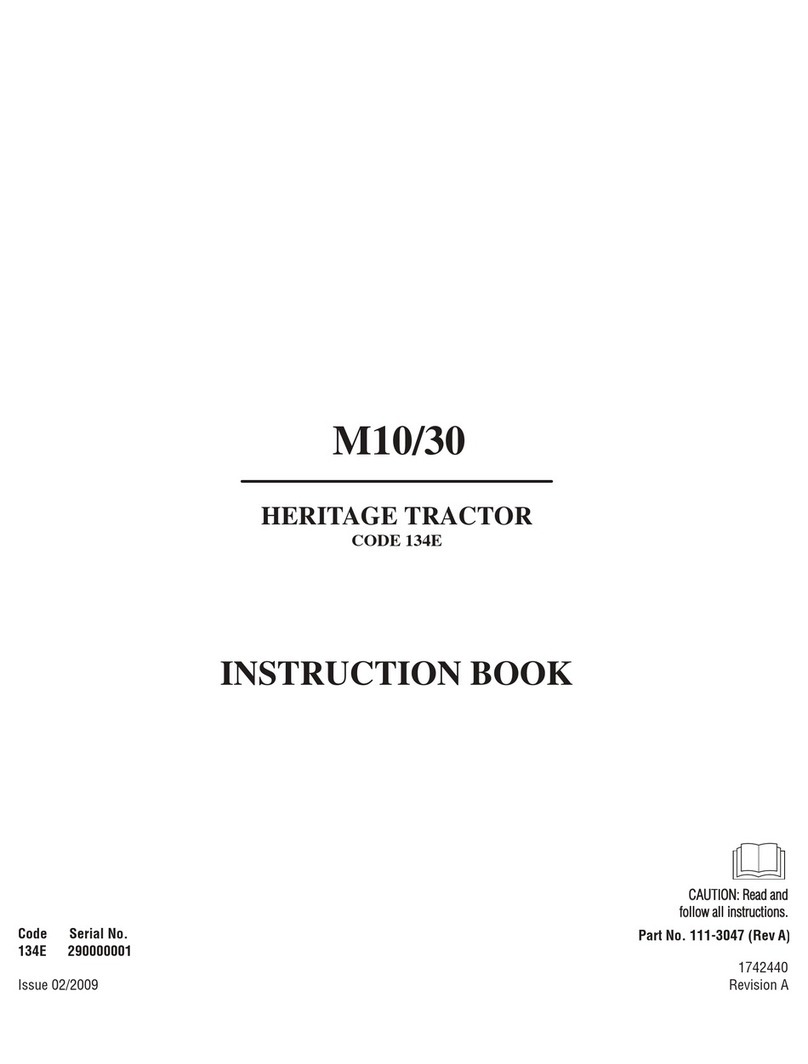
Hayter
Hayter HERITAGE M10 Instruction book

McConnel
McConnel ROBOPOWER Operator's manual
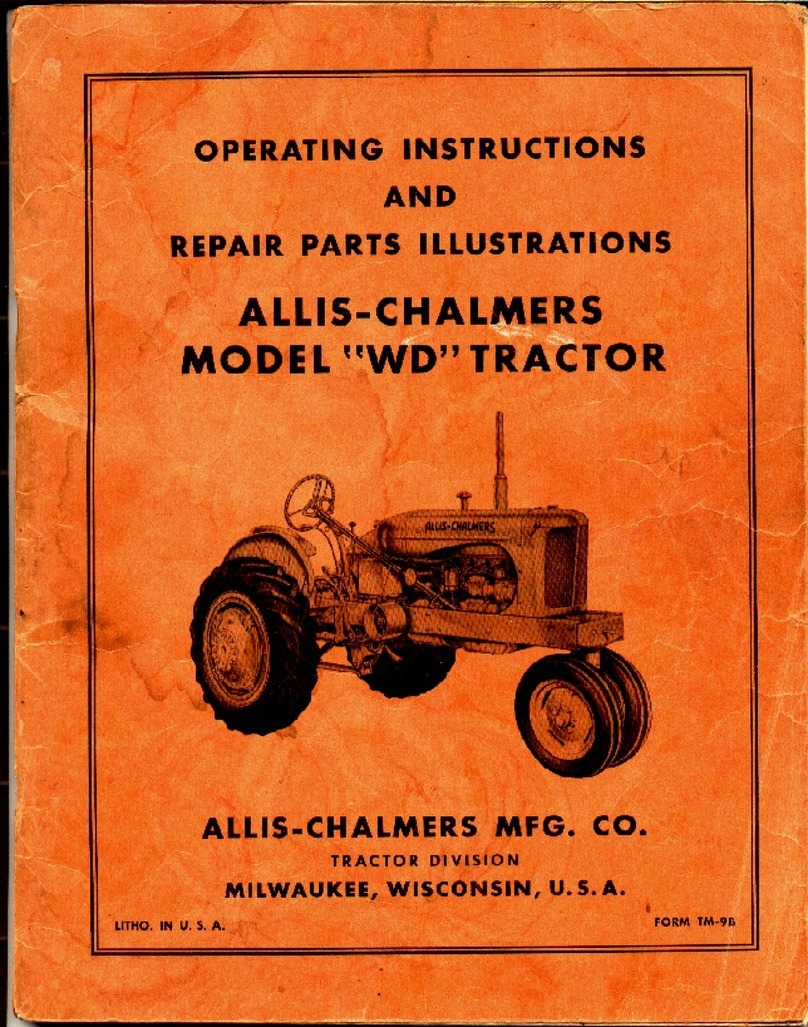
Allis-Chalmers
Allis-Chalmers WD Operating Instructions and Repair Parts Illustrations
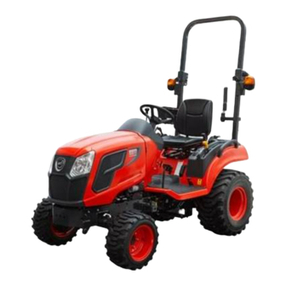
Kioti
Kioti CS2220H manual

Husky
Husky BOLENS 194-01 Owner's operation and maintenance manual
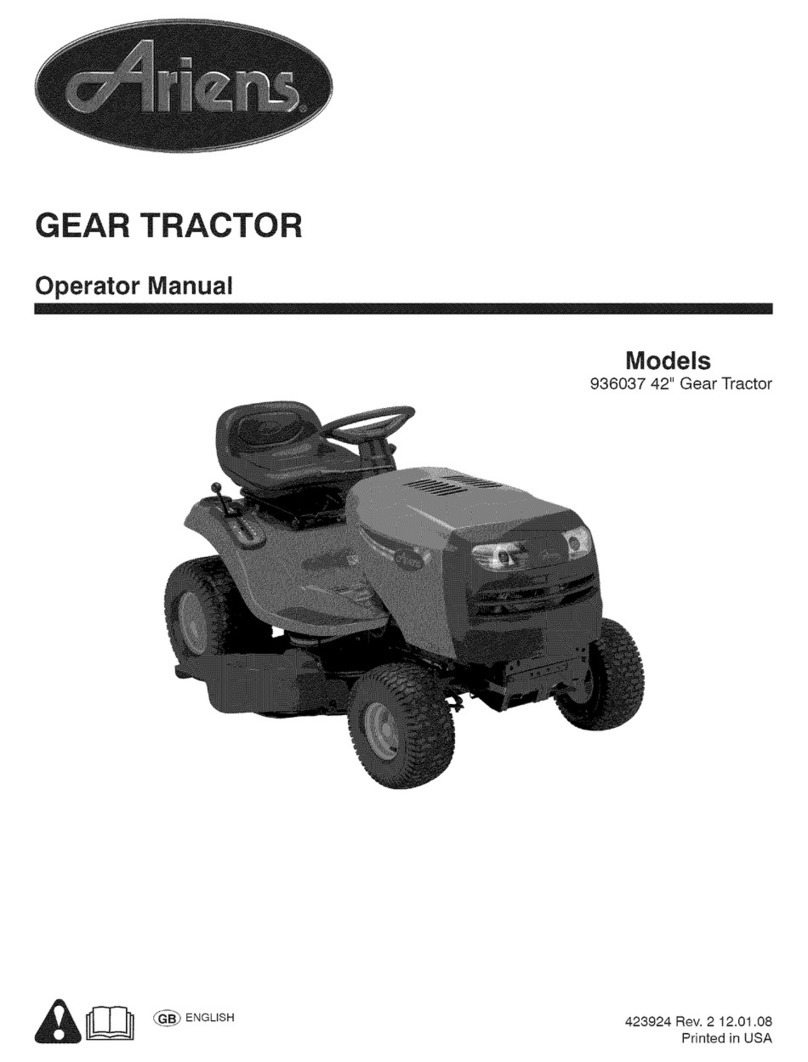
Ariens
Ariens 936037 42" Gear Tractor Operator's manual
